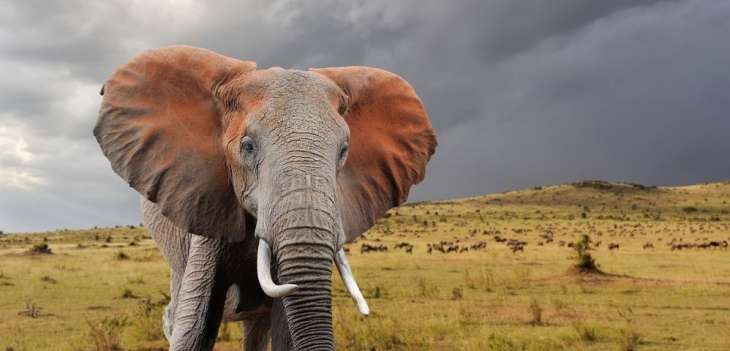Lifting ivory ban won't solve elephant poaching problem

New research from the Universities of Aberdeen and Stirling suggests that lifting the ivory trade ban will not protect elephants from poachers.
There has been much debate around the issue of how to regulate the current poaching epidemic, with a suggestion that lifting the existing ban on trade and tightly regulating it may be the solution, but the new research carried out by scientists shows that there is no way to sustainably harvest ivory as the demand is far too great.
Professor David Lusseau of the University of Aberdeen and Professor Phyllis Lee of the University of Stirling have produced a new model to predict how much ivory could be sustainably harvested from elephant populations.
Lusseau and Lee aimed to develop a harvest model that would meet two challenges largely disregarded by current harvest models: hunters harvest individual elephants not ivory and most demographic models only consider females when males are preferred targets.
Professor Lusseau said: "We decided to produce a new, realistic model to define how much ivory could be sustainably harvested from elephant populations due to the fact that CITES (the Convention on International Trade in Endangered Species of Wild Fauna and Flora) is considering the possibility of a legal ivory trade.
"Existing models treat each individual elephant as 'average' meaning that they supply an average amount of ivory. The trouble is that this isn't the way it works. In reality, some elephants supply much more ivory than others, for example, males supply more than females. The amount also increases as elephants age.
"Our estimates tell us that for a healthy, well protected and growing population of about 1350 elephants, we could sustainably harvest ivory from about one big male every year. However the problem occurs when the biggest males have been used, you then need to take several smaller animals to harvest the same amount of ivory the next year, and so on. It takes time to grow ivory, a big male will be 45-55 years old before his tusks have grown to full size. We would need two to three generations of excellent reproduction to replace these ivory-bearing males. The most significant issue is that of demand. If only one male per 1350 elephants is the sustainable harvest, then there is simply no way to meet current demand.
Professor Lee added: "Some proposals for allowing an international trade in ivory assume that you can source enough ivory to meet current demand from natural deaths alone. Using known death rates for males and females of each age from a healthy population, the actual amount of ivory available from any cause of death could be determined. It was very clear that ivory from natural deaths cannot meet demand.
"Our research shows that if sustainable harvesting cannot be achieved at current levels of demand, then it is the demand that must be managed more effectively."
Going forward, the team hope to build upon their model, introducing environmental and social demographic effects in the population model as well as developing a better understanding of hunter behaviours and motivations. This will help scientists to explore a solutions for sustaining elephant populations into the future.
Provided by University of Aberdeen




















